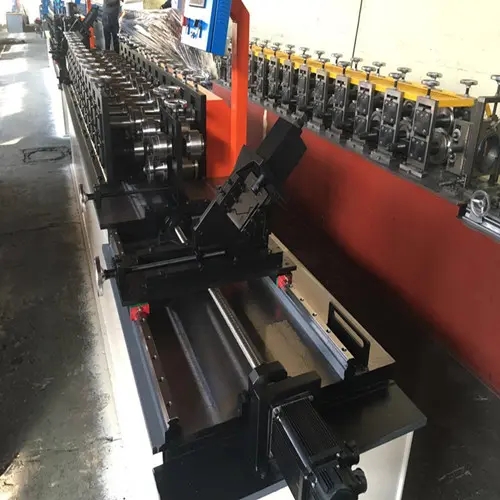
The Importance of Downspout Roll Forming Machines in Modern Construction
In the ever-evolving construction industry, efficiency, precision, and durability are paramount. One of the unsung heroes behind modern building aesthetics and functionality is the downspout roll forming machine. These machines have transformed the way downspouts, essential components for rainwater management systems, are fabricated and installed.
Understanding Downspouts
Downspouts, often made from materials such as aluminum, steel, or vinyl, are vertical pipes that lead rainwater from gutters down to the ground or drainage systems. Their primary purpose is to direct rainwater away from the building's foundation, thereby preventing water damage, erosion, and mold growth. Properly functioning downspouts are crucial for maintaining the integrity of a structure and enhancing its longevity.
The Role of Roll Forming Machines
Roll forming is a continuous process that shapes material into desired profiles through a series of rollers, making it a highly efficient method for producing downspouts. A downspout roll forming machine takes coils of material and processes them into precisely shaped downspouts that adhere to industry standards.
The machine operates through a series of steps
1. Feeding The raw material, typically in coil form, is fed into the machine. 2. Roll Forming As the material passes through multiple rollers, it is gradually shaped into the desired cross-sectional profile of a downspout. 3. Cutting After the bending process, the machine cuts the material to specific lengths. 4. Punching and Notching Optional features allow for additional functionalities like holes for installation purposes or unique shapes to suit various design preferences.

Advantages of Using Downspout Roll Forming Machines
1. Precision and Consistency Roll forming machines provide high levels of accuracy, ensuring that every downspout meets precise specifications. This consistency is crucial in large-scale construction where multiple components must align perfectly.
2. Cost-Effectiveness The automation of the roll forming process reduces labor costs significantly. Manufacturers can produce large quantities of downspouts in a short time, decreasing the overall production cost.
3. Reduced Material Waste The continuous nature of roll forming minimizes scrap material compared to traditional cutting methods. This not only contributes to a more sustainable manufacturing process but also reduces material costs.
4. Flexibility in Design Modern downspout roll forming machines can accommodate various materials and profiles, allowing manufacturers to cater to diverse architectural needs. This flexibility supports creative design while maintaining structural performance.
5. Durability and Strength Downspouts produced by roll forming machines are often more robust due to uniform thickness and construction techniques, enhancing their ability to resist weather elements and wear over time.
Conclusion
As buildings continue to push the boundaries of design and efficiency, the importance of downspout roll forming machines in construction cannot be overstated. They not only streamline the production process but also ensure that downspouts perform their vital role effectively. With ongoing advancements in technology, these machines will likely continue to evolve, offering even greater benefits and innovations for builders, architects, and homeowners alike. In an age where sustainability and durability are increasingly prioritized, embracing such machinery can lead to better construction practices and a greener future.